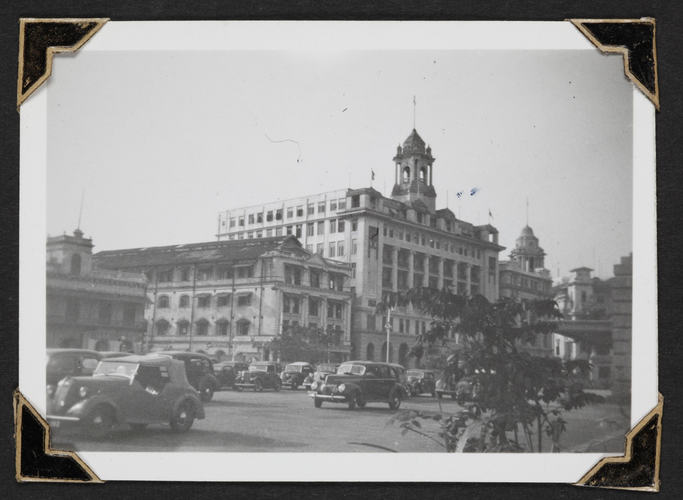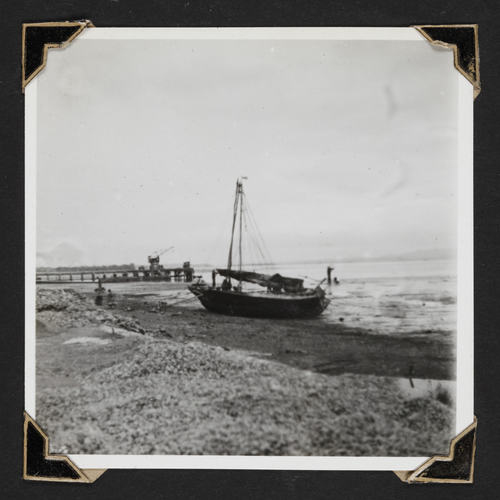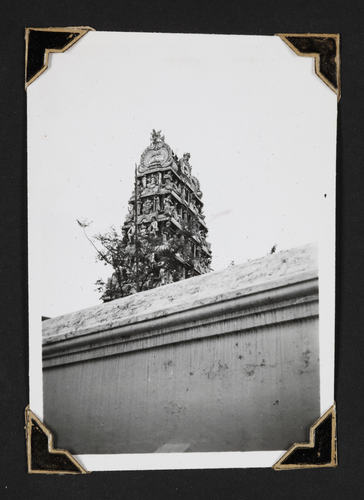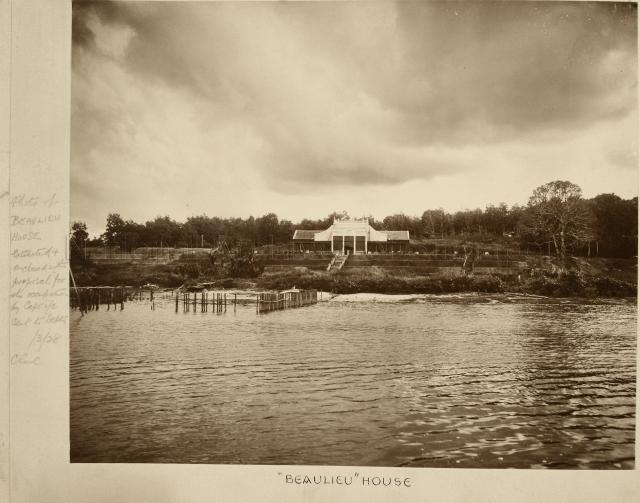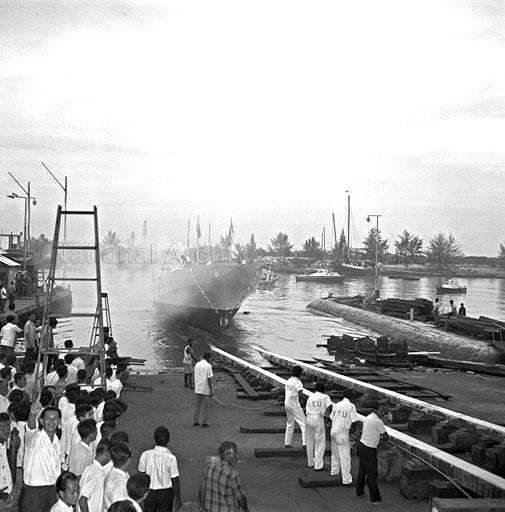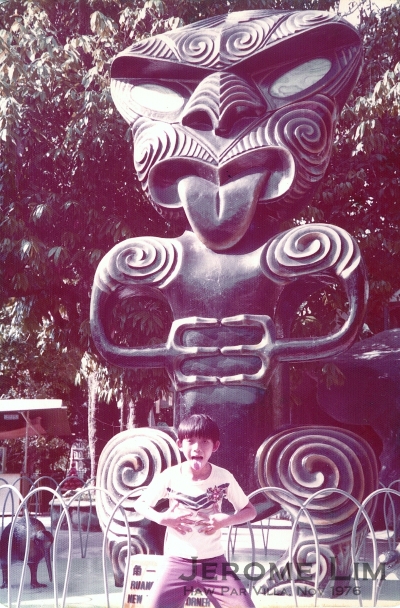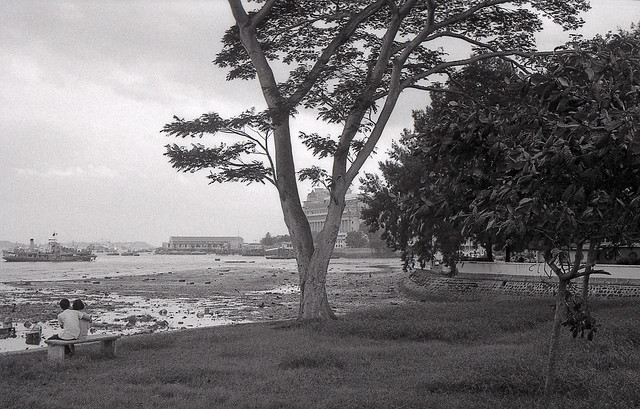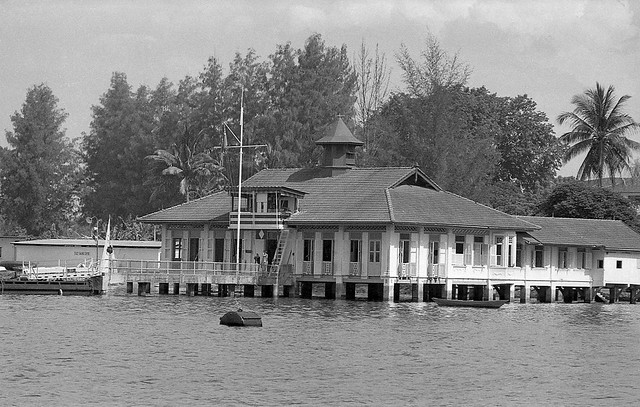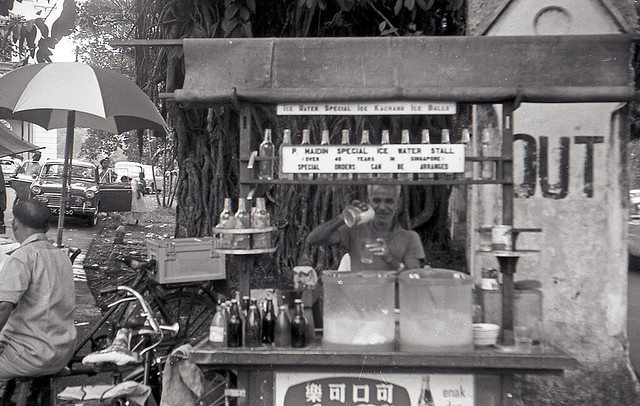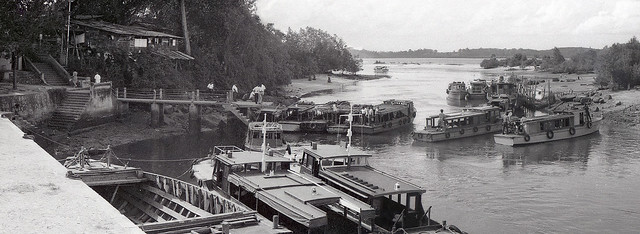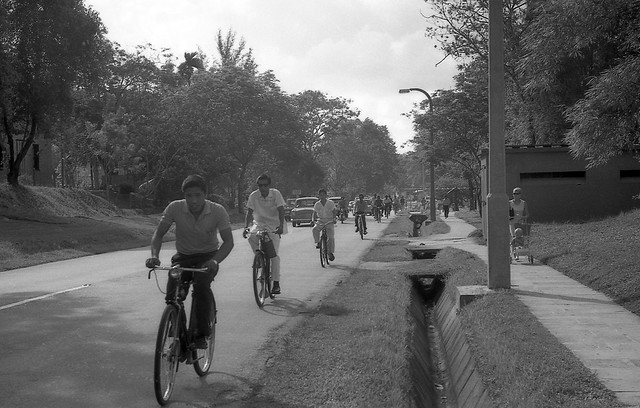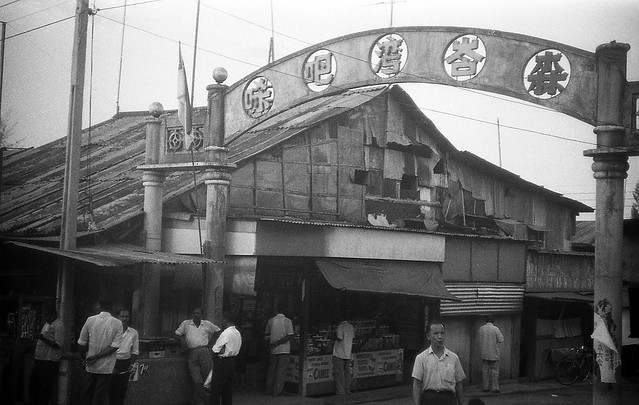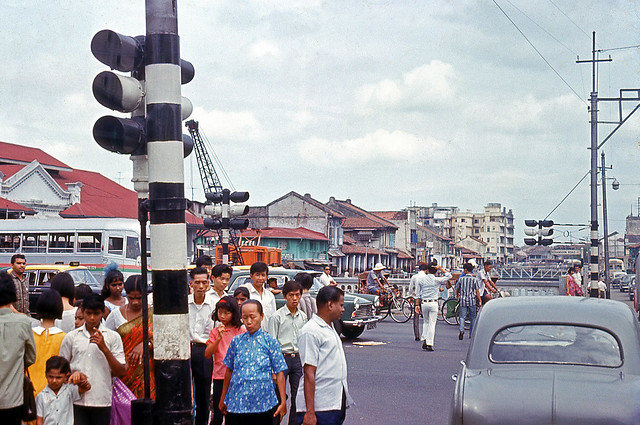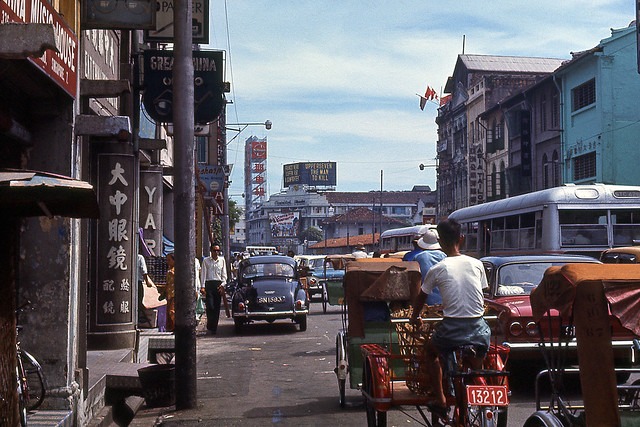Another set of photographs from the Harrison Forman collection offering a peak into Singapore’s past is one that contains views, in complete colour, of a famous but long demolished mansion and its curious garden in 1941. Both were objects of much fascination, and its even had the likes of Carl Mydans also photographing it for LIFE Magazine that same year, for a feature on Singapore published in July 1941.
Perched on an elevation that was described as “probably one of the best” for a mansion in Singapore and one that commanded a “striking view” of a great part of the island, the lavish and gilt-domed residence of the Aw’s in Pasir Panjang, Haw Par Villa, must have been a magnificent sight for the one thousand guests who were invited for its housewarming party in March 1937. No expense had been spared in the construction and the fit out of the rather lavish interiors of the mansion, which was topped by seven gilded domes. Such was the amount of gold that was used that Singapore’s entire stock of gold was reportedly depleted because of it!

Designed by pioneering Singapore architect Ho Kwong Yew, Haw Par Villa sat on a plan that was rather uniquely a series of circles centred on a central hall that was surrounded by circular rooms. Entering the house, one would have encountered its reception hall, and beyond that the central hall. There was also a drawing room, a dining room, four bedrooms with dressing rooms and attached bathrooms, all of which were furnished in a rather ostentatious manner with furnishings and decorative items that were handpicked by Mr Aw Boon Haw from the “best furnishing houses and decorators” during his travels to America and Europe. Even the coloured cement walls inside the house were expensively decorated — with mother of pearl inlays. There were also specially made bronze panels which had been brought in from Europe featuring tigers in various poses, lining the doorways inside the house. The opulent interiors would also have been brought quite literally to light by day and by night, having been illuminated by the generous amount of light filtering through stained-glass laylights fitted on the domes, and through the house’s curved steel-framed windows in the daytime, and by coloured lighting after nightfall.

Almost as soon as it was completed, the villa, and the fantastical and extravagantly laid out and publicly accessible garden that was created to complement it, became an instant hit with visitors to Singapore, as well as with the local population. Open to the public, the garden was laid out over several terraces of the elevation that the villa stood on, and although it was meant to complement the mansion rather than take centrestage, much attention was drawn to it by curious press reporters and photographers. Its decorative structures, such as the rockeries and grottoes of artificial rocks, a pagoda, miniature buildings and figurines depicting animals such as cranes and storks, drew a fair bit of interest as did its 50 feet by 25 feet swimming pool.

The garden soon became synonymous with Singapore and a must-visit visitor attraction. Among its early visitors were Hollywood couple, William Keighley and Genevieve Tobin during part of their honeymoon in Singapore in May 1939, 39 Australian schoolboys visiting Singapore with the Young Australia League in January 1939. The garden also took centrestage for a pahit party (cocktail party) that was thrown for a visiting Republic of China military delegation in May 1941, which was attended by the British military’s top brass based in Singapore. Such was Haw Par Villa’s draw that it seemed to be the first out-of-town destination to which “all newcomers to Singapore” were brought to — as was the case with a batch of Australian nurses with the Australian Army Nursing Service who were sent to Singapore in September 1941.1

The villa was itself was a draw. Public access to it was permitted during open houses held on festive occasions such as the Chinese New Year. Sadly, the villa did not survive very long. It was taken over for use as a residence during the Japanese Occupation and reportedly housed both Japanese and German officers.2 Poorly maintained, it was left in a poor state by the end of the war. Looting had also stripped the house of all its furnishings and many of the statues from its garden.
By early 1951, Mr Aw Boon Haw, who had lost his younger brother during the war (Boon Par died in Rangoon in 1944), had Haw Par Villa demolished in the hope that he could have a mansion modelled after a Chinese-styled palace put up in its place. Later, a 200 ft high pagoda was proposed. The ongoing austerity drive, which limited spending on private home to a mere $50,000, put paid to Mr Aw’s plans and he turned his attention instead to expanding the set of displays. In doing so, he placed focus on using displays to provide moral guidance to visiting members of the public through the depiction of scenes from Chinese folklore, the Chinese classics, and Buddhist and Taoist teaching which contained messaging on moral values such as filial piety.

Mr Aw passed away in September 1954 without being able to fulfil a desire to have the demolished villa replaced. The garden, which took on the name “Haw Par Villa” from its association with the missing villa, continued to be a popular spot for visitors to the island. Its collection of figurines and tableaux would have appeared to have been quite bizarre to those not schooled in traditional Chinese teachings and was at the very minimum, a source of amusement and fascination. Among those who graced the garden was the very first Miss Universe, Armi Kuufcla, who visited in April 1953. Another famous personality to visit was teenage idol, Frankie Avalon, late in 1965.

The garden was also popular for fashion shoots, and as a filming location. Among the movies with scenes shot at Haw Par Villa was a joint Bollywood-Malayan production, “Singapore” in 1959, which contained a scene that saw the popular Maria Menado dance with Bollywood heartthrob Shammi Kapoor. The film was released in 1960. A 1966 Hollywood production, Kommisar X, aka Operation Far East, aka So Darling, So Deadly, had a scene that featured a chase through the garden, and a 1967 British production, Pretty Polly (also A Matter of Innocence) included an evening scene that was filmed at Haw Par Villa.

Following Aw Boon Haw’s death, Boon Par’s son, Aw Cheng Chye, introduced displays that broke with the garden’s theme, and its Chinese flavour. An avid traveller, Cheng Chye put up International Corners to mark his overseas trips. While this may have contributed to the garden’s quirkiness, it did much to alter its character. Much, much more has happened since. An attempt to convert the garden into a theme park in 1990, failed rather miserably. That saw a ride through an all too prominent dragon. This some believe, brought negative energy on the garden due to the incompatibility of the dragon and the tiger (the “Haw” in Boon Haw’s name, translates into tiger). Most recently, the garden seems to have gone the way of hell, with the current operator intent on Hell’s Museum becoming Haw Par Villa’s draw even if hell, especially the non-Chinese interpretations of life after death, was never intended as the garden’s dominant theme.

1A number from the group were among a second batch of evacuees who would depart on board the SS Vyner Brooke on 12 February 1942, which was attacked and sunk by the Japanese forces on 14 February 1942 in the Bangka Strait. Out of a group of 65 nurses on board the Vyner Brooke, only 24 survived the war, with 21 losing their lives during a massacre on Radji Beach on Bangka Island.
2There was a German U-Boat repair and supply facility maintained at Pulau Damar Darat, which included a graving dock. Among the residences that German naval personnel were known to have used were ones in Pasir Panjang and also at Gilstead Road.




































































